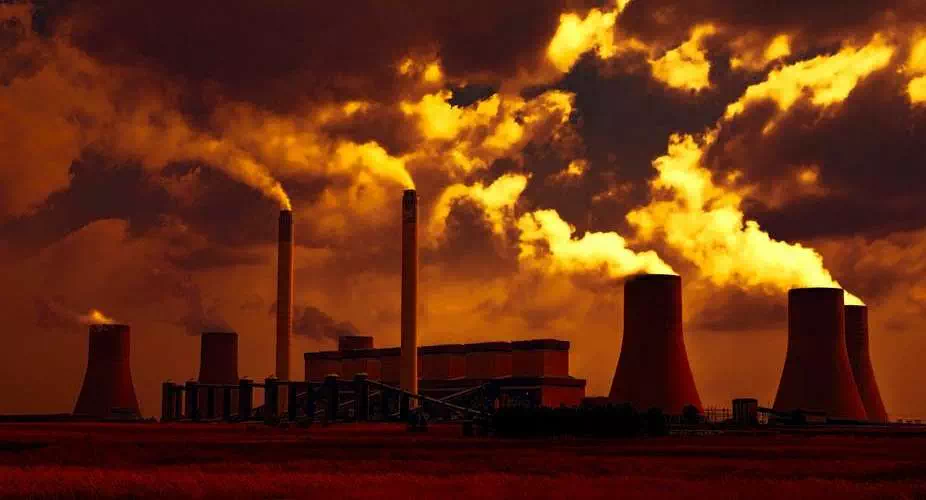
Environmental change related with an Earth-wide temperature boost can significantly affect galactic perceptions, another investigation has found. These discoveries couldn't just assist cosmologists with extemporizing their perceptions as indicated by changing natural settings, yet in addition assume a noteworthy job while planning new telescopes, for example, the Extremely Large Telescope (ELT) that is being worked close Cerro Paranal in Chile.
For this exploration, a worldwide group of environment researchers, atmosphere analysts, space experts, and meteorologists met up to investigate the significant meteorological boundaries that decide the nature of cosmic perceptions. The examination fundamentally centred around understanding how much environmental change influences the nature of galactic perceptions.
The exploration group investigated boundaries, for example, temperature, wind course and speed, and the water fume in the climate at the Very Large Telescope (VLT) at the Paranal Observatory in northern Chile. This observatory was especially picked because of the accessibility of numerous ecological sensors that could enroll nearby meteorological conditions. The information, which was gathered over the range of thirty years, helped the exploration group distinguish long haul patterns and, in this manner, comprehend the impacts of environmental change on future perceptions. The outcomes presumed that the expansion found in the temperatures in this specific locale was over the world normal, which added to the slanted discoveries. Additionally, air disturbance likewise caused an uplifted picture obscure in the telescope's catches.
"The information demonstrated a 1.5°C increment in close ground temperature throughout the most recent forty years at the Paranal Observatory. This is marginally higher than the overall normal of 1°C since the pre-mechanical age," said Professor Susanne Crewell from the Institute of Geophysics and Meteorology, University of Cologne, US.
The first cooling arrangement of the VLT was intended for conditions during the time. In any case, as the temperatures have climbed and gotten hotter from that point forward, the nature of the perceptions has been hurt because of repeating turbulences brought about by expanded temperature. The most disheartening situation as indicated by IPCC is a normal ascent of 4°C inside the following 100 years—a possibility that must be thought about when fabricating the 39-meter Extremely Large Telescope (ELT) at a close by site. Aside from the VLT, which is worked by the European Southern Observatory (ESO), three different models were additionally used to show how the galactic perceptions are as of now being affected by environmental change, and how, later on, environmental change may impede the working of cosmic observatories.
Among these impediments, the essential issue looked by stargazers is the diminished goal brought about by disturbance inside the telescope vault, which prompts diminished 'arch seeing'.
A 'wind-driven corona' was additionally watched, brought about by the flood in wind shear in the upper lower atmosphere identified with the fly stream. This marvel happens when choppiness in the climate shifts so rapidly that the telescope's control framework neglects to address them. This can possibly block the exoplanet contemplates, as it restricts the difference capacities of the instrument. The ascent in water fume in the air could likewise prompt diminished cosmic signs.
The exploration further distinguished an ascent in choppiness noticeable all-around layer near the ground which prompted the mutilation of pictures—caused because of the quick shift of cold and warm layers. Notwithstanding, this can't be credited to environmental change totally, as constructional changes additionally had an influence.
By and large, the discoveries made by this examination were conveyed in the current issue of Nature Astronomy, distributed on September 10, which is devoted to the point atmosphere. The extraordinary issue intends to bring issues to light in cosmology for atmosphere viewpoints that are significant for crafted by stargazers.
Worldwide environmental change has just sly affected the earth. Ice sheets have contracted, ice on streams and lakes is separating prior, plant and creature ranges have moved and trees are blooming sooner. Impacts that researchers had anticipated in the past would result from worldwide environmental change are presently happening: loss of ocean ice, quickened ocean level ascent and more, more serious warmth waves.
A portion of the drawn out impacts of worldwide climate change are as per the following:
1. Global atmosphere is extended to keep on changing over this century and past.
2. Because human-instigated warming is superimposed on a normally shifting atmosphere, the temperature rise has not been, and won't be, uniform or smooth over the world or after some time.
3. Dry spells in the Southwest and warmth waves (times of anomalous blistering climate enduring days to weeks) wherever are extended to turn out to be more extreme, and cold waves less extraordinary all over.
4. Hurricane-related tempest force and precipitation rates are extended to increment as the atmosphere keeps on warming.
5. Global ocean level has ascended by around 8 crawls since dependable record keeping started in 1880. It is extended to rise another 1 to 8 feet by 2100. This is the consequence of included water from dissolving land ice and the development of seawater as it warms. In the following quite a few years, storm floods and elevated tides could join with ocean level ascent and land subsidence to additionally build flooding in numerous districts.
6. The Arctic Ocean is relied upon to turn out to be basically ice free in summer before mid-century.
Coming Soon...!
Comments (0)